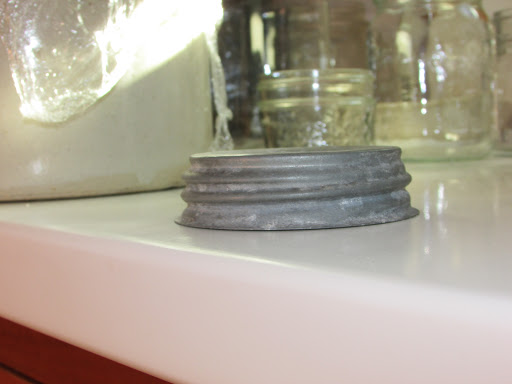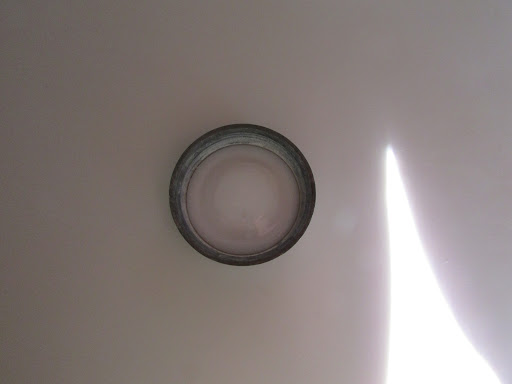This recipe is...well...this recipe is...different. But I really like it! Don't let the name fool you; this is a "dessert soup" and a rare gem indeed.
I copied this recipe from the Anita, Iowa, Centennial Cookbook over a year ago and finally got around to trying it last week. The recipe caught my eye because I love raisins--a point I've mentioned before. I even like raisins in gravy! And prunes? Hmmm. Prunes are just overgrown, slimy raisins, right? That's what I tell myself, at least.
I'm game to try anything that I think might be good once, so I made this after our Sunday dinner a couple weekends ago. I found it in the section of the cookbook dedicated to historic recipes, and it was labeled as a Swedish dish. The recipe was contributed by Mrs. Nolan Stockham who put the following note with it.
"Anyone whoever ate a meal in the home of Mr. and Mrs. Frank Osen was probably offered this dish. Mrs. Osen kept it on hand constantly."
I don't have a drop of Swedish blood in me, but if prune soup and their meatballs are representative examples of traditional Swedish cooking, I'm interested in learning more!
Here is what you'll need:
water
1/3 cup large pearl tapioca
1 lb. prunes
1 lb. seedless raisins
1 1/2 cups sugar
1 Tablespoon vinegar or lemon juice
dash salt
1 tsp. vanilla
First, soak the pearl tapioca in water overnight. My personal practice when a recipe calls for soaking pearl tapioca overnight is to actually soak it longer than that. I have a strong dislike of tapioca pearls that are crunchy in the center. I put the pearls in a quart jar and filled it nearly to the top with water.
 |
| The pearl tapioca after it had soaked in water for over 12 hours. |
The next day, cover the prunes and raisins with water and cook until soft. The fire from cooking our noon dinner out on the Hayes-Custer in the summer kitchen had nearly died, so I added a couple of small split pieces of wood and put the kettle of prunes, raisins, and water directly over the firebox. In this picture, I tried to capture the flames, but I find it very difficult to photograph fire.
Astute observers will note that the front lid over the firebox was not a part of the original photos of the Hayes-Custer in
this post. It is one of those that has three concentric lids all in one and was purchased at the antique store in Corley, Iowa. It fits both the Qualified Range and the Hayes-Custer, so I'm excited to have it.
After the prunes and raisins have had time to simmer and plump up--which only takes a few minutes-- the next step is to add the soaked tapioca, sugar, vinegar or lemon juice, salt and vanilla. Because I was cooking this out in the summer kitchen, I combined them all in a bowl in the pantry first. Also, I used lemon juice rather than vinegar because I don't like the combination of vinegar and raisins.
 |
All of the ingredients now mixed together in the pot on the stove.
|
Cook, stirring frequently, until tapioca is done. It will begin to look mostly transparent, and the soup itself will have begun to thicken. It took about fifteen minutes over a low fire.
 |
| The prune soup simmering nicely over a low fire right over the firebox. |
Remove from the fire.
 |
| The freshly-made prune soup cooling on the counter in the summer kitchen. |
Cool and serve with whipped cream.
 |
A sauce dish of the finished prune soup. It's oh-so-GOOD!
|
Some notes:
This soup is very sweet. I did not sweeten the whipped cream, and I was very glad that I had not. I am going to reduce the sugar next time by at least a fourth cup and see what happens.
My preference would be to make this with two pounds of raisins and omit the prunes altogether. I'll have to rename it, of course.
To all of my prepper readers, in my opinion, this is a great recipe to have on hand for a disaster. All of the ingredients are extremely shelf stable, and it didn't take much fuel at all to prepare it. It would also be easy to cut in half or to double without any adverse effects. I wouldn't necessarily call it economical, however.
Even though Nancy said "Prunes will not cross my lips," this was a hit with my mom and Phyllis, the lady who helps us with our market baking on Mondays, so I'm not the only one who thinks it's good.



















